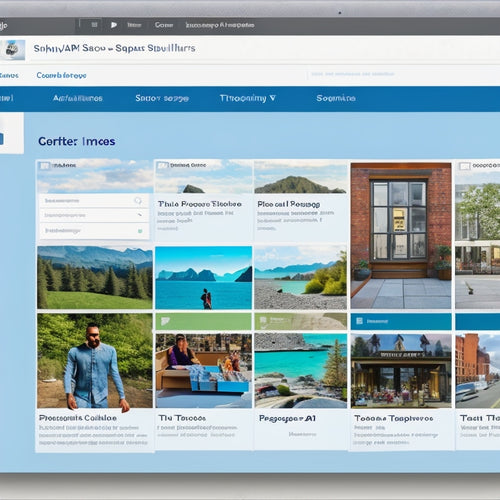
Streamline E-Commerce Setup for Success
Share
A well-configured e-commerce setup is essential for providing a seamless online shopping experience, as it enables effortless transactions, automates billing processes, and organizes products in a logical and intuitive manner. To achieve this, it's vital to establish a strong foundation, optimize payment and billing processes, and automate operational workflows. By streamlining these elements, businesses can minimize manual efforts, reduce errors, and focus on growth and customer satisfaction. By implementing these strategies, e-commerce businesses can tap into their full potential and propel themselves towards success, and discover the additional benefits that come with a finely-tuned online store.
Key Takeaways
• Establish a strong e-commerce foundation with effortless transactions and automated billing processes for a seamless customer experience.
• Customize categories for logical hierarchies and intuitive navigation to help customers easily find products.
• Implement proper inventory management to prevent overselling and ensure accurate stock levels.
• Optimize payment and billing processes with automated workflows, efficient payment processing, and default settings for orders.
• Automate operational tasks to refine workflows, enhance efficiency, and free up resources for growth and customer satisfaction.
Configure E-Commerce Foundations
Establishing a strong E-Commerce foundation is essential for a seamless and efficient online shopping experience. It sets the stage for effortless transactions, streamlined inventory management, and automated billing processes.
A well-configured foundation enables businesses to organize products effectively, ensuring customers can easily find what they need. Customizing categories is critical in this process, allowing for the creation of logical hierarchies and subcategories that facilitate intuitive navigation.
Inventory management is another important aspect, as it guarantees accurate stock levels and prevents overselling. By setting up products, categories, and inventory management correctly, businesses can ensure a smooth and efficient online shopping experience.
This lays the groundwork for successful transactions and customer satisfaction.
Optimize Payment and Billing
With a solid E-Commerce foundation in place, attention can now turn to optimizing payment and billing processes. Streamlined transactions and automated workflows can greatly enhance the overall customer experience. Efficient payment processing is vital, and configuring billing automation can greatly reduce manual efforts.
By setting up default settings for orders, such as autocharge and tax application, businesses can guarantee seamless transactions. Additionally, configuring credit card settings, sales tax, and invoices can further streamline the payment process.
Implementing billing automation features, such as failed auto-charge automation and credit card expiry automation, can also help minimize errors and improve customer satisfaction. By optimizing payment and billing processes, businesses can create a frictionless experience for their customers.
Automate and Refine Operations
Improving efficiency by streamlining tasks is crucial for businesses looking to automate and refine operational workflows in their E-Commerce setup. This can help enhance the efficiency and accuracy, freeing up resources to focus on growth and customer satisfaction. Achieving this goal involves automating billing and payment processes, and implementing workflows that minimize manual intervention to enhance processes.
Frequently Asked Questions
How Do I Handle Refunds and Exchanges for Digital Products?
To handle refunds and exchanges for digital products, establish a clear Return Policy outlining eligibility and procedures. Provide customers with a Digital Receipt, and configure automated refund and exchange processes to guarantee seamless transactions and maintain customer satisfaction.
Can I Integrate My E-Commerce System With an Existing ERP System?
To integrate your e-commerce system with an existing ERP system, establish API connections to facilitate seamless data sync, enabling real-time updates and eliminating manual data entry, thereby streamlining operations and enhancing efficiency.
What Security Measures Are in Place to Protect Customer Data?
To safeguard customer data, our e-commerce solution employs robust security measures, including Data Encryption to protect sensitive information and Secure Gateways to guarantee secure transactions, providing a trustworthy environment for customers to make purchases with confidence.
How Do I Handle Multiple Currencies and Exchange Rates?
To handle multiple currencies and exchange rates, configure Currency Conversion settings to accommodate global transactions, and implement strategies to mitigate Exchange Rate Fluctuations, ensuring accurate pricing and seamless international commerce.
Is There a Way to Restrict Product Purchasing Based on Customer Location?
Did you know that 67% of online shoppers abandon their carts due to location-based restrictions? To restrict product purchasing based on customer location, implement Geo Blocking and Location Filtering to guarantee compliance with regional regulations and optimize customer experience.
Related Posts
-
Why Is Shopify Sitemap Management Important?
This article explores the significance of Shopify sitemap management. It discusses the benefits of effectively manag...
-

How Do I Add a Product Feed to Shopify
The integration of product feeds into Shopify offers numerous advantages for merchants seeking to enhance their onli...
-

How Do I Set up A Tracking Page on Shopify
This article aims to provide a comprehensive guide on setting up a tracking page on the Shopify platform. It explore...

